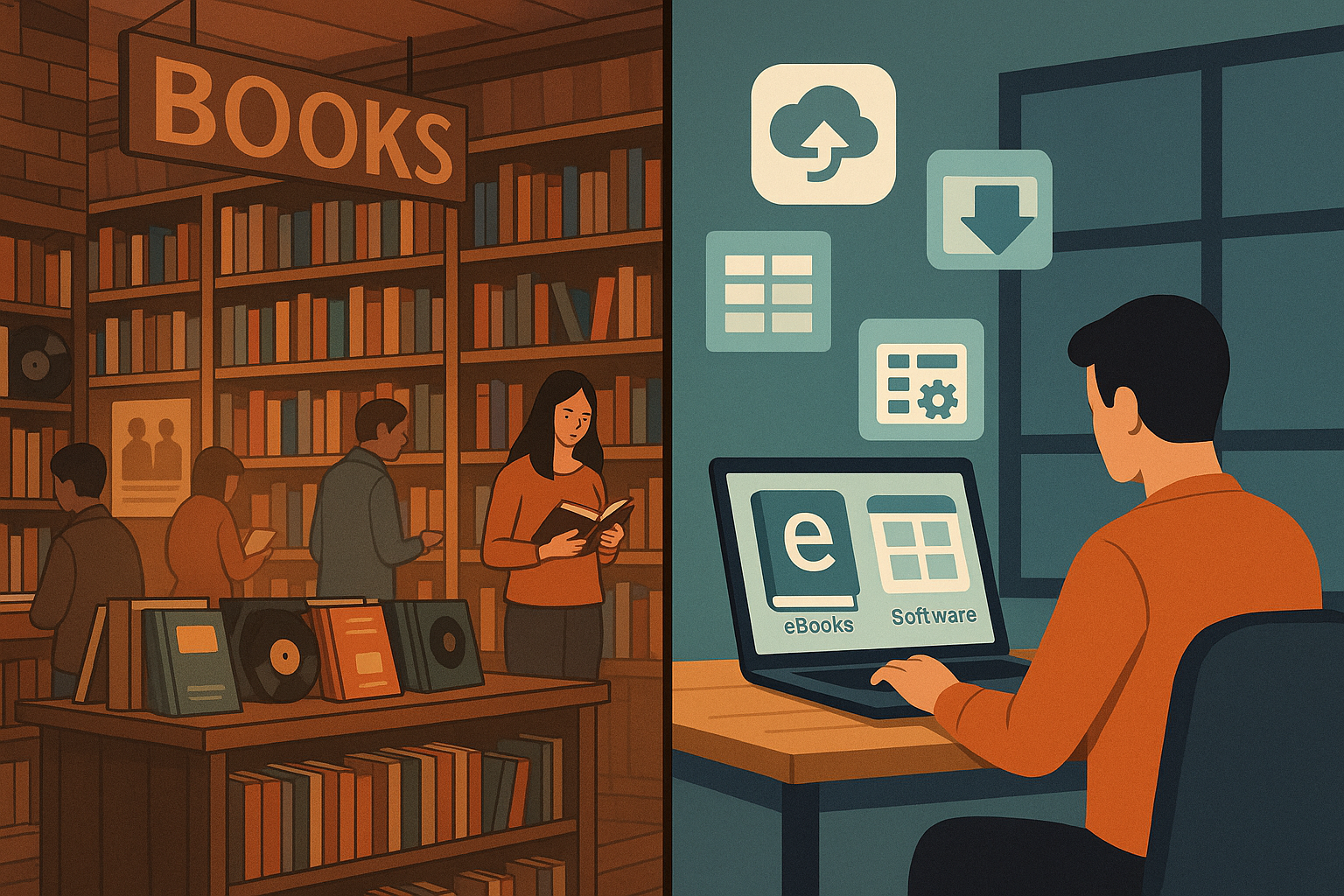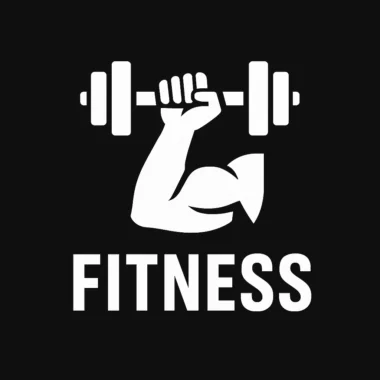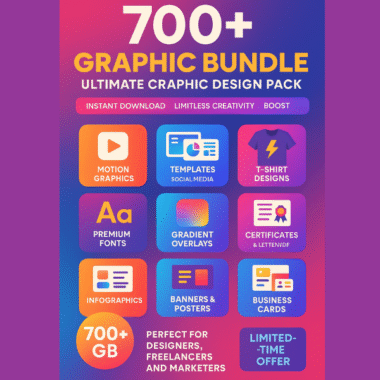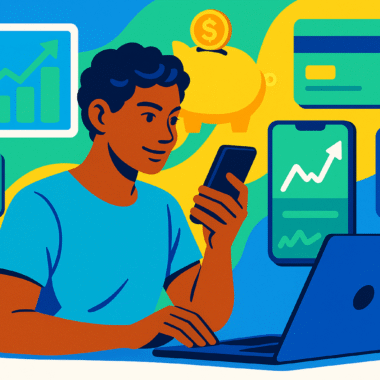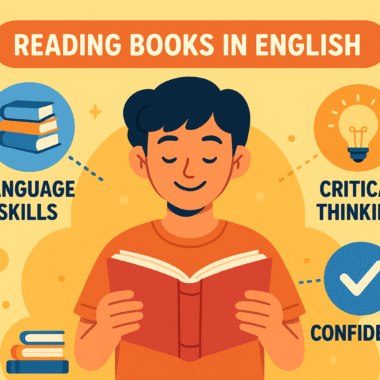Half Price Books vs Stiward.store:
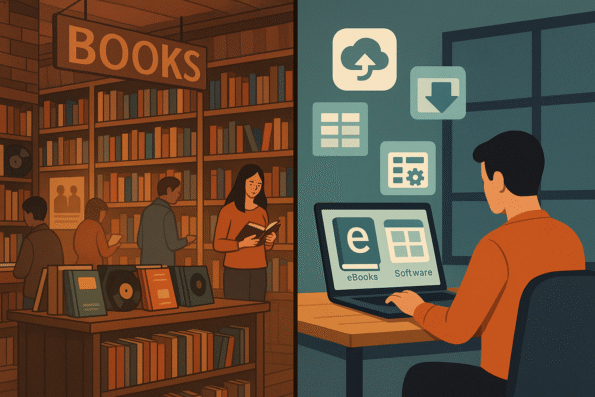
Half Price Books (HPB) is a long-established Texas-based chain of used and new bookstores. Founded in 1972 by Pat Anderson and Ken Gjemre in a converted laundromat in Dallas, HPB has since grown into a major national retailer. Its founders even coined the motto “We buy and sell everything ever printed or recorded (except yesterday’s newspaper)”, a slogan that still symbolizes the store’s commitment to wide-ranging inventory. Over the decades HPB expanded by keeping costs low – leasing affordable real estate and avoiding heavy debt – and by actively buying used media from local residents. Today the company remains family-owned and is headquartered on Northwest Highway in Dallas. It operates roughly 120 stores (including outlets) across 19 states as of 2023, making it the nation’s third-largest bookstore chain. In Texas alone HPB has over 40 locations, and recent new stores have opened even as far away as Boise and Nashville.
Half Price Books locations often feature towering stacks of pre-owned books, reflecting the chain’s mission to keep books in circulation. HPB’s business model centers on circulating used (and some new) books, records, CDs, DVDs and magazines. About 70% of its inventory is used material, purchased directly from the communities around each store. In fact, HPB routinely buys roughly two million used books per month. This constant influx of secondhand inventory means each HPB store has a unique, ever-changing selection – a competitive advantage the company emphasizes. Because inventory is sourced locally, store managers can tailor stock to local tastes, and customers often find one-of-a-kind items they won’t see elsewhere or online. HPB’s strategy also keeps prices low: it strives to make books as affordable as possible (true to its name), donating unsold books to charity to clear shelf space.
HPB has cultivated a community-oriented image. The company promotes literacy and sustainability: it offers year-round educator discounts, hosts school book drives (building “Half Pint Libraries”), and actively recycles excess stock. Its wholesale division, Texas Bookman, sells remainders (overstock) at discount to businesses worldwide, and even opened a public retail site in 2020 to sell directly to bargain hunters. In short, Half Price Books’ market position is that of a thrifty, neighborhood bookstore chain whose longevity (50+ years) and over 100 locations make it a top player in used-and-new books.
Evolving Media: The Shift from Print to Digital
The book and media market has changed dramatically since HPB’s founding. While print remains significant, digital media consumption is booming. In recent years e‑books, audiobooks, streaming video, and other digital products have grown sharply. For example, the global eBook market was about $25.3 billion in 2024 and is projected to reach nearly $41 billion by 2033. Convenience factors – instant downloads, portability, adjustable text and fonts – have made digital books attractive. A 2021 survey found roughly 30% of U.S. adults read an e‑book in the past year, and this figure has remained steady since 2011. In contrast, about 65–70% of Americans report reading at least one print book annually. Print still dominates overall sales: in 2022 76% of U.S. book sales revenue was from printed books, with e‑books around 20%. Genres like fiction and romance see stronger e‑book sales, while children’s and non-fiction often sell more in print.
Digital media is growing fastest in other areas: audiobooks and e‑audiobooks have been surging, and libraries worldwide are seeing record digital checkouts. In 2023, library patrons borrowed 662 million e‑books, audiobooks and digital magazines – a 19% increase over 2022. (E‑books alone accounted for 370 million checkouts, up 12% year-on-year.) Podcasts, video streaming and online courses are also on meteoric rises. Audiobook revenue exceeded $9.8 billion in 2025, up 24% from 2024, and more than half of U.S. consumers now listen to audiobooks. Globally, e‑learning (digital education content) already topped $217 billion in 2023 and may approach $842 billion by 2030.
This dramatic shift to digital has forced even traditional retailers to adapt. For HPB, that meant slow but notable digital adoption. The chain waited until 2010 to computerize inventory systems, and for years relied chiefly on brick-and-mortar sales. However, the COVID-19 pandemic was a turning point. When stores briefly closed in 2020 and customers shifted online, HPB rapidly upgraded its online platform. It overhauled its inventory database and improved its website to allow customers to search any store’s stock and order books for delivery. By 2022, the company planned a brand-new online store to enhance the shopping experience. These moves show HPB recognizes the importance of digital channels; indeed, its survival strategy is to make each physical visit “worth the trip” compared to shopping online.
Conversely, Stiward.store exemplifies the fully digital model from the start. It is an online marketplace (based in the UK) that sells only digital products – eBooks, templates, software tools, and similar content – often at steep discounts. Stiward promotes itself as offering a curated collection of “top-tier digital products” to empower individuals and businesses. Customers access Stiward entirely through the internet, downloading products to laptops, tablets or smartphones – the same modern devices shown below.
Digital consumers increasingly use laptops, tablets, and smartphones to access content – as shown above – a reality that underpins Stiward.store’s platform. Stiward touts a mission to “empower individuals and businesses with the best digital products available,” emphasizing productivity and efficiency. The Stiward.site specializes in digital templates, eBooks, online courses, marketing tools, and related resources. Each product is fully digital (often in editable formats like Canva templates or PDF), meaning no physical media is involved. In fact, Stiward’s homepage boldly asks “Looking for the best price?” – highlighting that its competitive edge is affordability of digital goods. Unlike a bookstore, inventory on Stiward is virtually unlimited; new products can be added any time, and thousands of items (from business guides to educational course kits) are available at any moment. The site also emphasizes quality control and security – curating offerings and maintaining a safe checkout to earn customer trust.
Comparing Platforms: Physical vs. Digital Advantages and Drawbacks
Both Half Price Books and Stiward.store serve content consumers, but in fundamentally different ways. Each has distinct advantages and disadvantages:
- Half Price Books (Physical Storefronts):
- Pros: Hands-on browsing experience; serendipitous discovery of unique titles; community atmosphere. Buying used books is eco-friendly (recycling literature) and often very inexpensive. HPB stores often carry rare or out-of-print items, and patrons can immediately take a book home without waiting for shipping. There is a tangible value in physical ownership and collecting. HPB also engages in local charity (e.g. donating overstock to literacy programs) and offers in-person events and discounts for educators.
- Cons: Limited by geography and store hours; inventory is finite and not searchable beyond a given store. Sales depend on foot traffic and physical presentation. Without digital integration, it can be harder for customers to find specific titles in real time. HPB faced competition from online retailers, and for years lacked streamlined e-commerce (only recently modernizing its website). Physical media can’t match the instant delivery of digital goods, and print inventory ties up storage space or requires markdowns/donations for slow sellers.
- Stiward.store (Fully Digital):
- Pros: Instant access to a vast catalog of digital products from anywhere. Extremely low marginal costs allow aggressive pricing – many items on Stiward are sold for a fraction of their “original” price. Digital products never sell out or go “out of stock.” Buyers benefit from immediate downloads (no shipping). The platform appeals to tech-savvy creators, entrepreneurs and marketers by providing business tools (e.g. Done-For-You eBook templates, marketing course bundles, AI writing software) that might otherwise be expensive. Updates and new content can be deployed easily.
- Cons: No physical product to hold or collect. All content is intangible; consumers without digital devices or bandwidth cannot use it. There is no in-person customer service or community event space. Digital goods can feel less “special” than printed items for some readers. Also, some digital products (especially “resell rights” or templates) may saturate easily or have licensing nuances. The user experience depends entirely on one’s internet access and technical comfort.
Use Cases: Who Benefits From Each Platform
- For Half Price Books:
Customers who love the tactile experience of books – feeling paper, flipping pages, browsing aisles – will relish HPB. Bargain hunters and vintage collectors find value in the unpredictable, ever-changing inventory (you might stumble upon a rare find). Parents and educators appreciate the discounted children’s books and teacher perks (HPB routinely supports literacy causes and even gives educators a standing discount). Hobbyists (music collectors, film buffs) can buy secondhand vinyl, DVDs or magazines. HPB also caters to readers in smaller communities where a local store may be one of few book outlets. In short, anyone who prefers a physical book or enjoys treasure-hunting in used media will benefit from Half Price Books. - For Stiward.store:
Entrepreneurs, freelancers, and digital marketers are prime users. For example, a blogger might buy an editable eBook template bundle from Stiward to create content products quickly. Small business owners may use Stiward’s Canva templates and marketing course materials to jumpstart online sales. Hobbyists interested in self-improvement could purchase an e-course on AI art prompts or ChatGPT content creation. Students or lifelong learners could grab inexpensive digital textbooks or skill-training modules. Essentially, digitally-oriented users seeking ready-made tools and knowledge at bargain prices will find Stiward especially useful. Its focus on workflow and productivity resources means anyone looking to “achieve more in less time,” as the company says, is a key beneficiary.
In practice, these platforms can complement each other. A customer might visit Half Price Books for affordable leisure reading, then switch to Stiward.store to buy a professional eBook or course related to work. Alternatively, HPB’s customers (often budget-conscious readers) may appreciate learning about digital alternatives for content they can’t find used. Conversely, some Stiward shoppers might discover they enjoy physical novels at HPB after exhausting digital formats.
Market Trends and Statistics: Digital and Secondhand Insights
Understanding each platform’s context requires some data on where the markets stand today:
- Printed vs. Digital Book Consumption: Despite the rise of e-books, print still leads. In the U.S. trade book market of 2022, print books accounted for roughly 78–80% of revenue, while e-books made up about 10–12%. Pew Research surveys similarly show ~65% of American adults read a print book yearly, versus ~30% who read an e-book. That said, print’s share has slipped slowly (down a few percent over 5 years) while audiobook and other digital formats are growing rapidly. Notably, online retail dominates book sales: by 2020, over 71% of U.S. book sales were conducted online rather than in stores. The pandemic accelerated these shifts: 2020–2021 saw overall book sales jump ~21% over 2019, largely because people bought both print and digital books online while physical bookstores struggled.
- Digital Media Consumption: Beyond books, digital formats are surging. In libraries and schools alone, 2023 digital checkouts (e-books, audiobooks, magazines, etc.) reached 662 million, up 19% year-over-year. Streaming video and podcasts are also massive: global video streaming revenues topped $119 billion in 2025, and the number of podcast listeners is expected to exceed 600 million by 2026. The e-learning (online education) industry was ~$217 billion in 2023 and may quadruple by 2030. These figures illustrate a strong appetite for digital learning and entertainment products, underscoring why Stiward’s digital focus meets a booming market.
- Secondhand Book Market: The market for used books (HPB’s core specialty) remains robust and growing. WordsRated reports the global second-hand book market was about $24.03 billion in 2022 – and it grew 5.5% from the previous year. Some forecasts project it could double by the early 2030s (potentially reaching ~$45 billion by 2032). This growth is driven by sustainability trends, affordability, and nostalgia. In practical terms, Half Price Books is tapping into this large segment of consumers who prefer recycled media. As readers increasingly seek eco-friendly purchases, HPB’s emphasis on reusing books resonates well. Moreover, with print book prices often rising, buying secondhand remains an attractive way to save money on reading materials.
Conclusion: Complementary Value in Today’s Marketplace
In the modern ecosystem of content retail, Half Price Books and Stiward.store play complementary roles. Half Price Books represents the enduring appeal of physical media – offering a tangible, social, and sustainable way to consume literature and media. It serves communities, supports literacy, and provides value through affordability and serendipity. Stiward.store, by contrast, exemplifies the convenience and breadth of the digital age – delivering niche eBooks, templates and tools on-demand to a global audience at very low prices. One is brick-and-mortar and local; the other is entirely online and scalable.
Both platforms meet real needs. HPB will attract the customer who loves the feel of a book in hand or the thrill of a thrifted find, and who values community engagement. Stiward.store will satisfy the user who wants instant access to digital content or business resources without leaving home. Together, they illustrate how physical and digital media coexist: print and used books remain cherished even as e-books and online courses expand. Each feeds different facets of the reading/learning ecosystem. In an age of ever-evolving media, savvy consumers benefit from having both kinds of options available, using each where it shines.
Sources: Industry and company data from Half Price Books and Stiward.store official sites, book industry analyses, and media consumption reports. These illustrate the history, strategies, and market positions of both platforms as well as the broader trends in digital and secondhand media.

